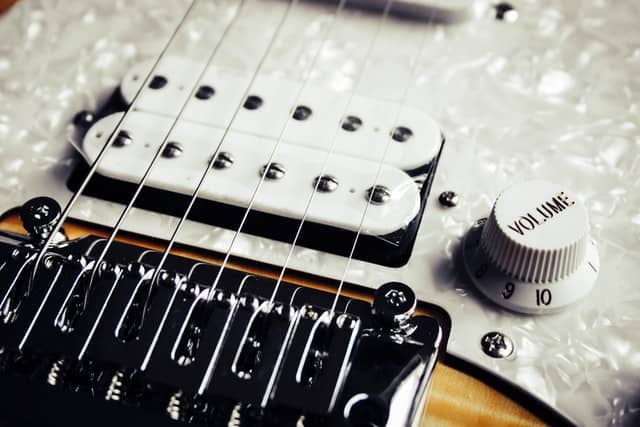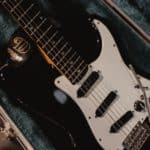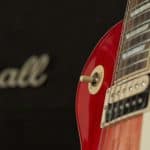If you are in the pursuit of new tonal choices, you will find a lot of options such as coil-splitting or pickup replacement.
However, on internet musician forums you could discover another gorgeous opportunity called phase shifting.
You may infer that mod will bring you a vast range of sounds but what does the term phase shifting mean?
Is it something that can be done in every guitar?
What exactly occurs when you phase shift your guitar pickups?
Although all of the previous questions might be confusing, we are here to help so you don’t have to worry.
A phase shift pickup switch could do numerous things, it can reverse the phase of a pickup to subtract frequencies in common with another pickup. In the case of humbuckers, it could switch the coils to be out of phase.
Although this topic could be overwhelming for people who are not related to it, I will try to clarify every doubt that may come up.
In this article, I will explain to you everything needed to be an expert, continue reading to the end and you will know everything about phase shifting pickups.
What is the phase of a guitar pickup?
Pickups work in a specific way, their coil presents two characteristics that influence their function when combined with others.
Those two features are phase and polarity, and both of them are involved in sound behavior.
In short, phase refers to the direction in which the current travels through the pickup while polarity is related to the direction of the magnetic field.
As regards current flow, it could occur in two ways: top coming or top going, when talking about polarity we refer to it as north or south, depending on how the pickup is set.
What does a phase shift pickup switch do?
What you will be doing when shifting the pickup phase is to change the polarity of one of the pickups to invert the direction of the sound wave, when pickups are shifted they swap between in and out of phase.
What out phase means is to change one pickup to be in phase with the other, to phase out the audio within a guitar you need two signals, if you have just one single signal it can be phase-shifted but there’s no point in doing that.
Pickups in phase mean that one of them is reverse wound to pick up the signal in opposite polarity, in that way when combining pickups, the two of them will get almost the same signal but in reverse, while the first pickup receives positive current the another will receive negative current, as a result, a great amount of the signal will be canceled, leaving just the difference between the two pickups.
It won’t be the same because, as the pickups are located in different positions in the guitar’s body, they will take non-identical signals, this is known as RWRP ( reverse wound reverse polarity).
As the wiring and the magnet are the other way around this is great to avoid or attenuate unwanted noises.
What is more, when signals do not match what you get is a loss in low frequencies and gain because they have an inverted polarity, as a consequence, they are subtracted.
How do phase-shifting pickups affect the tone of a guitar?
When phase-shifting pickups you will get a thin, pointy, sharp tone, similar to a wah effect which is really nice-sounding when clean.
In addition, you will notice narrower low frequencies and an increase in attack and punch, that’s why this characteristic tone is quite desirable to playing old-style blues, it will sound nasal and pretty musical
Remember that to phase shift you will require two signals, you will be able to switch just a unique signal but although it will be inverted, the outcome won’t be noticeable.
The magic of switching pickup phases occurs when two signals are joined to be canceled or attached as well.
If you are still confused about how the tone would be and want to check out how a phase-shift pickup sounds
I will leave you a link to a video of a player comparing the outcome obtained in both cases. In that way, you can see the difference in your own, what is even more, the video shows how the process is and explains how you can do the job.
Is it worth it to add a phase shift switch to your guitar?
Every upgrade you add to your instrument should be carefully considered before.
What I mean to say is that if you really think you are going to use the extra tones provided by phase shifting, by all means, go for it.
Oppositely, if you are not much of a tone tweaker and you feel that you won’t take profit from the additional tonal options you should think of not doing chances.
More sound options within your guitar would mean a wider range of tones covered but if you are not going to use them I suggest you leave your instrument as it is.
Can phase-shifting help with single-coil hum?
As previously mentioned when shifting the phase of a pickup, unwanted noises will be reduced or attenuated.
The important thing you must bear in mind is that this amazing feature is only achievable in multiple pickup switch positions.
In the case of Stratocasters, their middle pickups are reverse-wound so when you combine them with bridge or neck pickups they will be out of phase.
Consequently, they will produce a similar effect to humbuckers, canceling the natural excessive hum found in this kind of guitar.
Can humbucker pickups be phase-shifted?
Humbucker pickups are well-known for their distinctive function to cancel the interference and humming by placing two coils one right next to the other, in that way the magnetic field acts to provide this feature.
Legendary guitarists such as Jimmy Page, and Brian May, among many others are known for experimenting with phase-shifting back in the year.
The result you get when phase-shifting humbuckers could be inspiring to many: It just sounds a bit like a single-coil but not quite. You lose some volume and a lot of low end, but you gain a thinner, very present, and particular voice that’s just charming.
You can also coil-split one or both buckers and get a lot more sonic alternatives by combining pickup positions. Another way to do it is to apply a rotary switch just like the one found in old PRS models.
What that switch does through their various position is provide a lot of combinations of pickup positions, you will be able to choose not only split-coil humbuckers but also full buckers or split coils from different buckers.
This interesting mod gives you five tonally diverse options, the first one enclosures the bridge pickup as a humbucker, the second position involves the external coils of both buckers (the ones closer to the neck and bridge) while the third position works the other way around, using the internal pickups (the ones closer to the middle).
The relevant aspect of the third position is that the pickups will work in a series wiring, which means that the current goes through the first pickup and is then sent through another.
Contrary, the fourth position uses the same pickups as the third one but in this case, both are parallel wiring, which produces a different output sound.
Finally, in the fifth position, the whole neck humbucker takes place, with no coil-splitting or phase-shifting.
To sum up, all these mods are wonderful to explore a broad number of tonal choices in your guitar, you could experience amazing outcomes by adding this function to your instrument.
Do out-of-phase humbuckers sound like single coils?
The same way single-coil pickups do, humbuckers could be out-phased; they will not have the same tone as single coils, though.
By out-phasing humbuckers you can reach a quacky high end, the tone will be nice-sounding but it won’t be the same.
The particular tone achieved is not going to be the same thing but you can use it in a similar way. What is more, you can make a profit from it, building your own style by using buckers instead of single coils to produce that characteristic sound.

Hello there, my name is Ramiro and I’ve been playing guitar for almost 20 years. I’m obsessed with everything gear-related and I thought it might be worth sharing it. From guitars, pedals, amps, and synths to studio gear and production tips, I hope you find what I post here useful, and I’ll try my best to keep it entertaining also.





